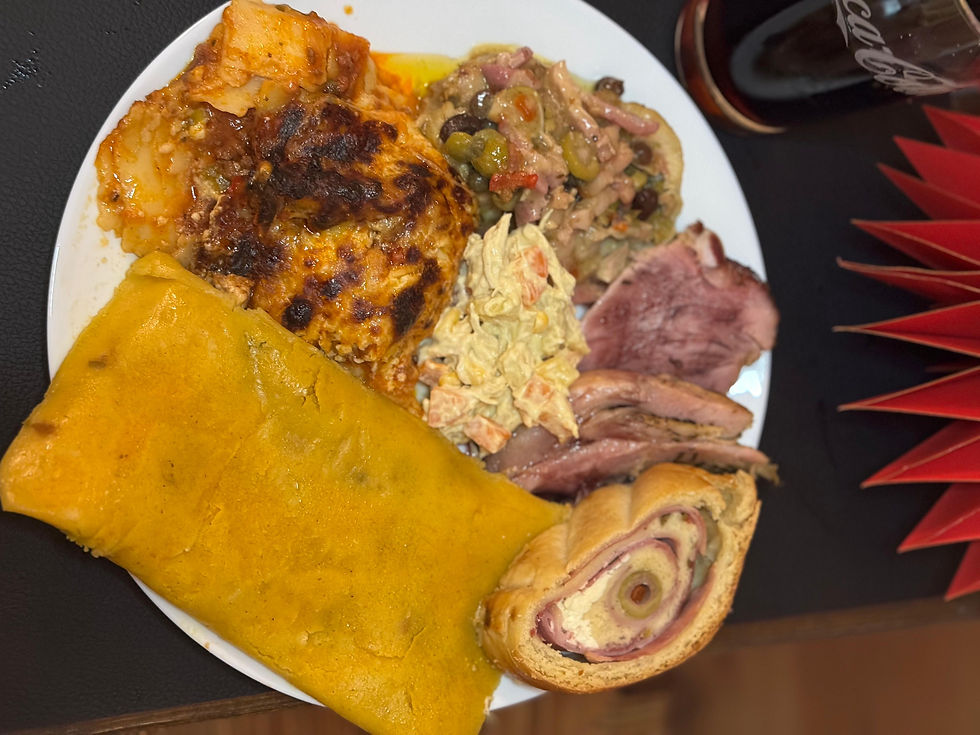Cooking Home Abroad: A Venezuelan Student’s Culinary Journey
- Vedran Obućina
- Jun 29
- 4 min read
Europe is a dream destination for countless young Latin Americans, and in the enchanting city of Dresden, Germany, we met one such dreamer — Jesús Duerto, a vibrant young engineering student from Venezuela whose love for food is as bright as his Latin spirit. Over steaming cups of coffee in a cozy Saxon café, he shared how cooking has become his way of carrying home in his heart.

Jesús , what sparked your love for cooking, and how has that passion evolved since you moved to Dresden?
My love for cooking dates back to when I was little, from watching my mom cook every day with such love. She has always been my inspiration in everything. Since I moved to Dresden, cooking has become more special to me. At first, I did it out of nostalgia, as I missed my food and customs, but over time, it became a way for me to feel close to my family and roots.
How do you stay connected to Venezuelan culinary traditions while living abroad? Are there specific dishes or ingredients that make you feel at home?
I try to cook Venezuelan dishes whenever I can. Although I don't always have the ingredients, I'm never without arepas. Making them makes me feel at home; it's like I'm in the kitchen with my mom. I also try to make hallacas in December, and if I can find grated white cheese or corn, I throw a cachapa. All of that gives me a sense of home.

Tell us more about these dishes...
Venezuelan arepas are traditional cornmeal cakes that form the heart of Venezuelan cuisine. Made from pre-cooked corn flour (harina precocida), the dough is mixed with water and a bit of salt, then shaped into patties and grilled, baked, or fried.

Arepas have a lightly crisp exterior and a soft, tender interior, creating the perfect pocket to fill with a wide variety of ingredients. They are incredibly versatile and can be stuffed with shredded beef, chicken, black beans, cheese, avocado, eggs, or even seafood, depending on the region and personal taste. More than just food, arepas are a daily staple in Venezuelan households, eaten at any time of day — breakfast, lunch, or dinner. They also carry deep cultural meaning, symbolizing comfort, tradition, and a shared culinary heritage that brings families together around the table.
And hallacas?
Hallacas are one of Venezuela’s most cherished traditional dishes, especially during the Christmas season. They are savory parcels made from corn dough that’s colored and flavored with annatto (achiote), then filled with a rich stew known as guiso. This filling typically combines beef, pork, and chicken with a blend of onions, peppers, garlic, raisins, olives, and capers, resulting in a delightful mix of salty, sweet, and tangy flavors.

Once assembled, the dough and filling are wrapped in banana leaves, tied with string like little packages, and then boiled. Preparing hallacas is typically a festive, communal activity that brings families together over several days to chop ingredients, cook the guiso, assemble, and wrap dozens of hallacas to share and enjoy. Beyond being a delicious dish, hallacas symbolize unity and celebration, representing the blending of Indigenous, African, and Spanish culinary influences, much like Venezuela’s own cultural heritage. Eating hallacas is more than just a meal; it’s a tradition that connects Venezuelans to their roots and one another.

And what is cachapa?
A cachapa is a beloved Venezuelan dish — a thick, golden pancake made from fresh ground corn. Unlike arepas, which use pre-cooked corn flour, cachapas are prepared with a batter of sweet corn kernels blended with a bit of milk, sugar, and sometimes a touch of salt, resulting in a texture that’s slightly coarse and delightfully moist.

Cooked on a griddle or skillet until beautifully browned, cachapas are typically folded over and generously filled with soft, salty white cheese called queso de mano, which melts deliciously into the warm corn. They can also be served with butter, cream, or slices of ham or pork. Slightly sweet, savory, and irresistibly rich, cachapas are a celebration of Venezuela’s love for corn, enjoyed at roadside stands, local markets, and family tables alike — a true comfort food that highlights the country’s vibrant culinary soul.
Have you discovered any unexpected similarities or interesting fusions between German and Venezuelan food since cooking here?

Yes, I've mixed several things. For example, I've filled arepas with German sausages or local cheeses like Camembert, and they're amazing! I've also used some German vegetables with Venezuelan seasonings. I like to experiment because I feel like I'm uniting two cultures in one dish.

What is a typical day or week of cooking like for you? Is it something you share with friends, or is it more of a personal ritual?
It depends. Sometimes I cook alone because it relaxes me and reminds me of my loved ones. At other times, I invite friends over for lunch, especially if they're from Germany or Latin America, so they can try my seasoning. I enjoy sharing my culture through food. I feel like every dish has a story to tell.
What advice would you give to someone who wants to start cooking more at home, especially if they're far from their culinary roots?
I would tell them to go for it; it doesn't matter if everything doesn't turn out perfectly at first. The most important thing is to cook with your heart. When you're far from your homeland, food is a way to embrace yourself. Start with what you miss most, even if it's an arepa with butter, and you'll see how it changes your mood.
Photos by: Jesus Duerte, Pixabay & Wikipedia Commons
Check more about Jesus on his Instagram account: https://www.instagram.com/jesusduerto/








Comments